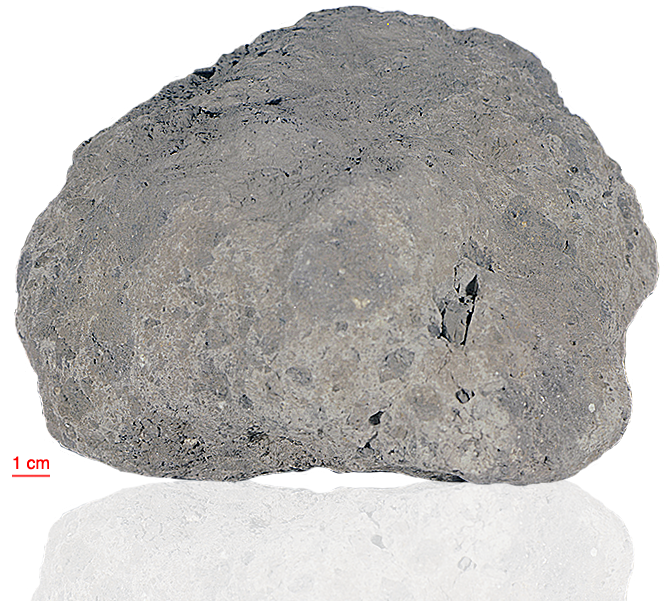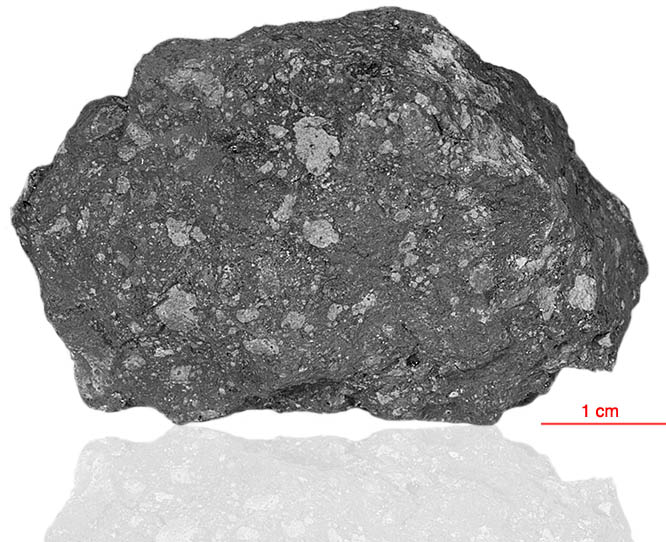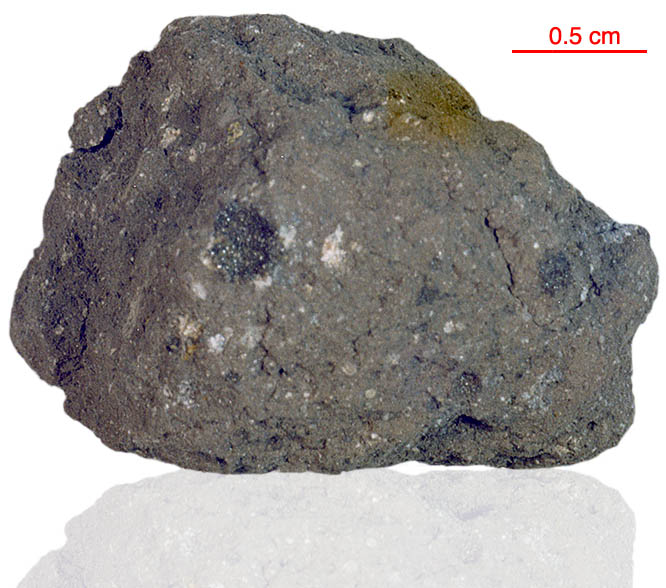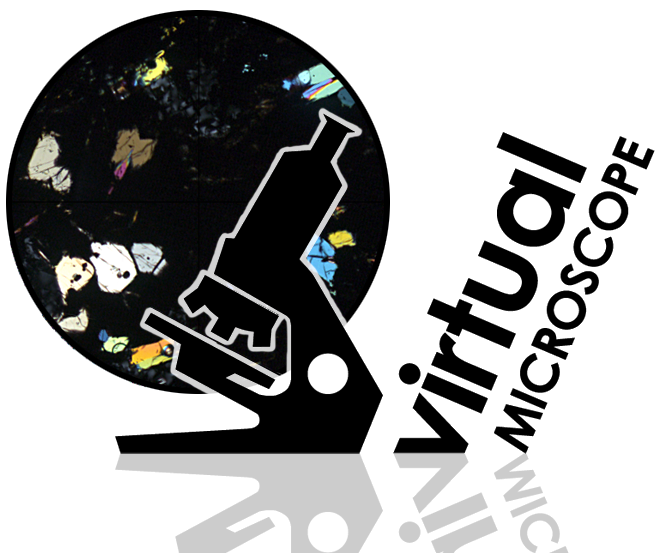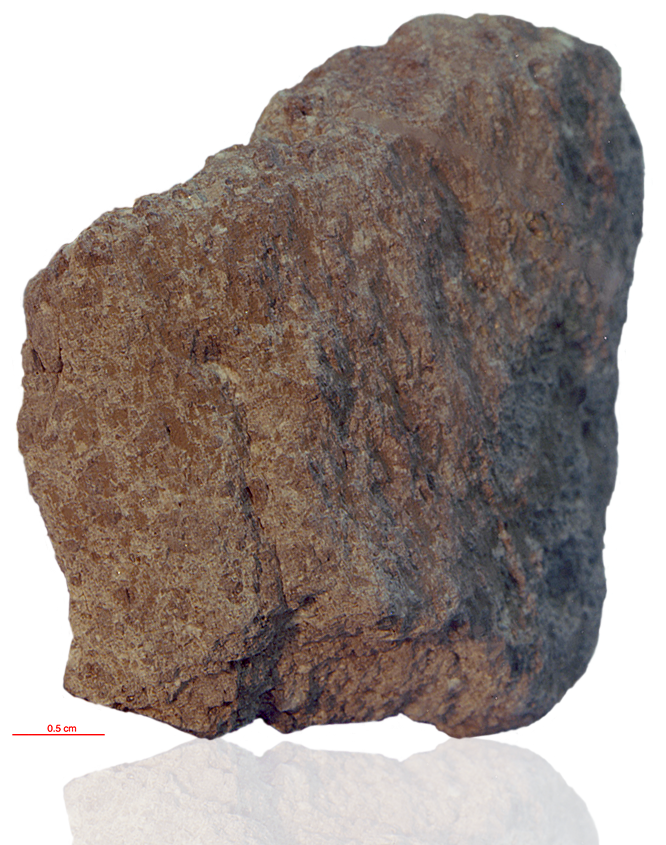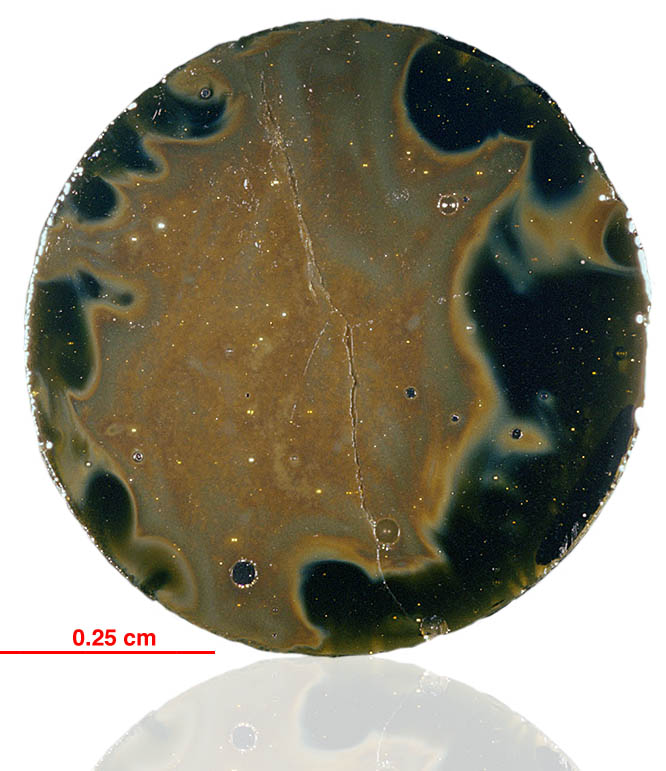
Fact sheet
14425 is a black glass sphere about 0.8 cm in diameter. About 5% of the surface is covered with bright grey metallic globules. Micrometeorite craters are also observed on the surface, but have apparently not been studied. The interior glass has partially devitrified. This large glass sphere was sieved from the “bulk soil sample” (14163) collected near the lunar module. The bulk composition is similar to the Apollo 14 regolith – it is not volcanic in origin. Two types of glass are visible in the thin section. One is clear and devoid of metallic spheres. The other area is cloudy with numerous small metallic iron spherules with ~10 % Ni and up to 9% P. Because of the isotropic nature of the glass, there are no rotations in this virtual microscope.
The sample weighed 0.794 grams before analysis.
Further details of this and other Apollo samples are here: http://curator.jsc.nasa.gov/lunar/
The Apollo 14 landing site was in a region formed by impact-basin debris.
Most of the 42 kilograms of rocks and soil collected on Apollo 14 are breccias (rocks that are composed of fragments of other, older rocks). In some cases, the rock fragments that form a breccia are themselves breccias. Such rocks obviously have experienced complex histories with multiple generations of impact events. Some breccias were heated enough that some of the material in the rock was melted.
Apollo 14 was launched on 31 January 1971.

